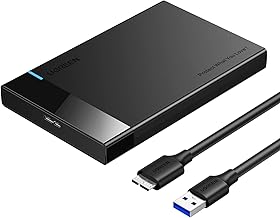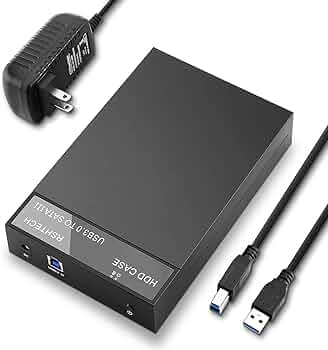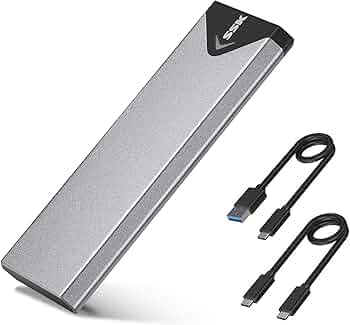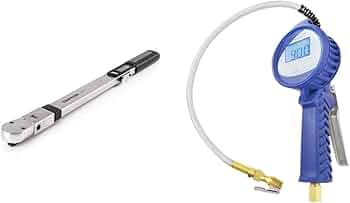The Ultimate Buying Guide for Hard Drive Enclosures
Overview
In this comprehensive buying guide, we will help you navigate the world of hard drive enclosures and find the perfect one for your needs. Whether you're looking to expand your storage capacity, protect your data, or simply make your files more portable, we've got you covered. We'll explore the different types of hard drive enclosures, key considerations to keep in mind, must-have features, price ranges, expert tips, and frequently asked questions.
Types
1. External Hard Drive Enclosures: These enclosures are designed to house an internal hard drive and provide a convenient way to connect it to your computer via USB, eSATA, or Thunderbolt ports. They are compatible with both HDDs and SSDs, making them versatile options for expanding your storage.
2. Portable Hard Drive Enclosures: If you need to carry your data on the go, portable enclosures are the ideal choice. They are usually compact and lightweight, offering easy portability and protection for your hard drive.
3. DIY Hard Drive Enclosures: For tech-savvy individuals, DIY enclosures allow you to build your own custom enclosure using spare parts or repurposed materials. This option offers flexibility and the opportunity to create a unique enclosure that suits your specific requirements.
Key Considerations
1. Compatibility: Ensure that the enclosure is compatible with the type and size of your hard drive (2.5-inch or 3.5-inch) and the interface (SATA, USB, etc.) of your computer.
2. Transfer Speed: Look for enclosures that support high-speed data transfer protocols like USB 3.0 to ensure fast and efficient file transfers.
3. Build Quality: Opt for enclosures made from durable materials like aluminum or high-quality plastic to protect your hard drive from physical damage.
Features
1. Connectivity Options: Consider enclosures that offer multiple connectivity options such as USB 3.0, USB-C, eSATA, or Thunderbolt for maximum compatibility.
2. Cooling Mechanisms: Look for enclosures with built-in fans or passive cooling systems to prevent overheating and prolong the lifespan of your hard drive.
3. Tool-Free Installation: Enclosures with tool-free installation mechanisms make it easy to insert or remove hard drives without the need for additional tools.
Prices
Hard drive enclosure prices can vary depending on factors such as brand, build quality, features, and compatibility. Entry-level enclosures can be found for as low as $20, while high-end models with advanced features can cost upwards of $100.
Tips
1. Always backup your data before installing it into a new enclosure to avoid any potential data loss.
2. Consider the intended use of the enclosure (e.g., backup, media storage, etc.) to determine the necessary features and storage capacity.
3. Read user reviews and expert recommendations to ensure you choose a reliable and well-performing hard drive enclosure.
FAQs
Q: Can I use a hard drive enclosure for both HDDs and SSDs?
Q: How do I connect a hard drive enclosure to my computer?
Q: Can I use a 2.5-inch hard drive in a 3.5-inch enclosure?
Q: Are hard drive enclosures compatible with Mac and PC?
Q: Do I need an external power source for my hard drive enclosure?
A: Conclusion:
With our comprehensive buying guide, you now have all the information you need to make an informed decision when purchasing a hard drive enclosure. Consider your specific needs, compatibility requirements, and budget to find the perfect enclosure that will protect and expand your storage capacity effectively.


![SABRENT 2.5 Inch SATA to USB 3.0 Tool Free External Hard Drive Enclosure [Optimized for SSD, Support UASP SATA III] Black (EC-UASP)](https://m.media-amazon.com/images/I/61Z9M0wcn3L._AC_UY218_.jpg)



![SABRENT USB 3.0 to SATA External Hard Drive Docking Station for 2.5" or 3.5"' HDD, SSD [Support UASP] (EC-UBLB)](https://m.media-amazon.com/images/I/71upaB1LzlL._AC_UF350,350_QL50_.jpg)



![Sabrent USB 3.0 to SATA External Hard Drive Lay-Flat Docking Station for 2.5 or 3.5in HDD, SSD [Support UASP] (EC-DFLT)](https://m.media-amazon.com/images/I/81Y8qIYM2eL._AC_UF350,350_QL50_.jpg)



